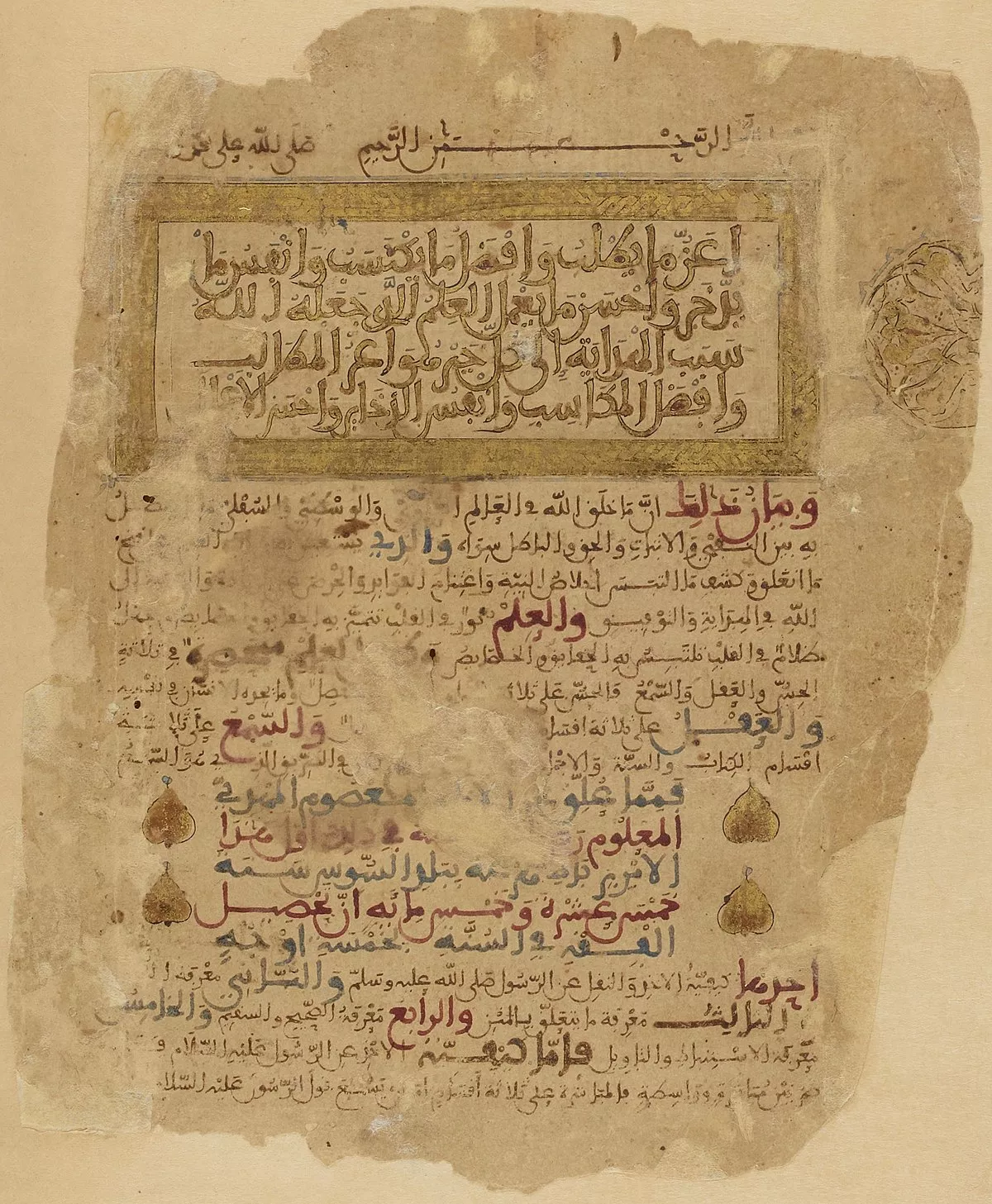 1.
1. Ibn Tumart founded and served as the spiritual and first military leader of the Almohad movement, a puritanical reform movement launched among the Masmuda Berbers of the Atlas Mountains.

 1.
1. Ibn Tumart founded and served as the spiritual and first military leader of the Almohad movement, a puritanical reform movement launched among the Masmuda Berbers of the Atlas Mountains.
Ibn Tumart launched an open revolt against the ruling Almoravids during the 1120s.
Many of the details of Ibn Tumart's life were recorded by hagiographers, whose accounts probably mix legendary elements from the Almohad doctrine of their founding figure and spiritual leader.
Ibn Tumart was born sometime between 1078 and 1082 in the small village of Igiliz in the Sous region of southern present-day Morocco.
Ibn Tumart was a member of the Hargha, a Berber tribe of the Anti-Atlas range, part of the Masmuda tribal confederation.
Ibn Tumart's name is given alternatively as Muhammad ibn Abdallah or Muhammad ibn Tumart.
Ibn Khaldun reports that Muhammad ibn Tumart himself was very pious as a child, and that he was nicknamed Asafu for his habit of lighting candles at mosques.
Ibn Tumart came from a humble family, and his father was a lamplighter at the mosque.
Ibn Tumart and his followers claimed he was a descendant of Idris I of Morocco and thus Hasan ibn Ali, grandson of the prophet Muhammad, who took refuge in present-day Morocco in the eighth century.
Thereafter, Ibn Tumart went east to deepen his studies, where he came under the influence al-Ghazali's ideas.
Ibn Tumart met and studied under both Mu'tazili and Ash'ari theologians.
Ibn Tumart composed his own sectarian identity by combining the Maliki and Zahiri fiqh view, the kalam of Ash'ariyya and Mu'tazila, the Shii imamate thought and Mahdi belief, and some principles of Kharijism with his own experiences.
Almohad hagiographers report that ibn Tumart was in al-Ghazali's presence when news arrived that the Almoravids had proscribed and publicly burned his recent great work, Ihya' Ulum al-Din, upon which al-Ghazali is said to have turned to ibn Tumart and charged him, as a native of those lands, with the mission of setting the Almoravids right.
Ibn Tumart's main principle was a rigid unitarianism, which denied the existence of the attributes of God as incompatible with his unity and therefore a polytheistic idea.
Ibn Tumart represented a revolt against what he perceived as anthropomorphism in the Muslim orthodoxy, but he was a rigid predestinarian and a strict observer of the law.
Ibn Tumart blamed the caliphate's "theological flaws" upon the ruling dynasty of the Almoravids.
Ibn Tumart condemned the subtle reasoning of Maliki scholars as "innovations", obscurantist, perverse and possibly heretical.
Ibn Tumart blamed the Almoravid governance for the latitude he found in Maghrebi society, notably the public sale of wine and pork in the markets, foodstuffs forbidden for Muslims.
The journey was not without incident - Ibn Tumart took it upon himself to toss the ship's flasks of wine overboard and set about lecturing the sailors to ensure they adhered to correct prayer times and number of genuflections; in some reports, the sailors got fed up and threw Ibn Tumart overboard, only to find him still bobbing a half-day later and fished him back.
Ibn Tumart stopped by Fez, the intellectual capital at the time, and engaged in polemical debates with the leading Malikite scholars of the city.
Ibn Tumart proceeded south, hurried along from town to town like a vagabond.
Shortly after his arrival in Marrakesh, Ibn Tumart is said to have successfully sought out the Almoravid ruler Ali ibn Yusuf at a local mosque.
When countered that at least on points of doctrine, there was little difference between them, Ibn Tumart brought out more emphasis on his own peculiar doctrines on the tawhid and the attributes.
Ibn Tumart proceeded to Aghmat and immediately resumed his old behavior - destroying every jug of wine in sight, haranguing passers-by for impious behavior or dress, engaging locals in controversial debate.
The ulama of Aghmat complained to the emir, who changed his mind and decided to have Ibn Tumart arrested after all.
Ibn Tumart was saved by the timely intervention of Abu Ibrahim Ismail Ibn Yasallali al-Hazraji, a prominent chieftain of the Hazraja tribe of the Masmuda, who helped him escape the city.
Ibn Tumart took the road towards the Sous valley, to hide among his own people, the Haghra.
Almost immediately, Ibn Tumart set himself up in a nearby mountain cave.
Ibn Tumart's bizarre retreat, his ascetic lifestyle, probably combined with rumors of his being a faith healer and small miracle-worker, gave the local people the initial impression that he was a holy man with supernatural powers.
Towards the end of Ramadan in late 1121, in a particularly moving sermon, Ibn Tumart reviewed his failure to persuade the Almoravids to reform by argument.
Ibn Tumart was promptly recognized as such by his audience.
In 1122, Ibn Tumart abandoned his cave and climbed up the High Atlas.
Ibn Tumart urged his followers to arms in open revolt against the Almoravids, to fulfill the mission of purifying the Almoravid state.
That the Almohad movement did not immediately collapse by the combined blows of the crushing defeat and large losses at the walls of Marrakesh, and the deaths of not only their spiritual leader, but their chief military commanders, is testament to the careful organization that Ibn Tumart had built up at Tinmel.
Ibn Tumart had set up the Almohad commune as a minutely detailed pyramidical hierarchy with fourteen grades.
Ibn Tumart disputed the succession with Abd al-Mu'min, but was defeated and executed in 1132.
The Almohad hagiographer al-Baydhaq claims that Ibn Tumart had already designated Abd al-Mu'min as his successor back in Bejaia.